
Envisat is a large Earth-observing satellite which has been inactive since 2012. It is still in orbit and considered space debris. Operated by the European Space Agency (ESA), it was the world's largest civilian Earth observation satellite.

BeppoSAX was an Italian–Dutch satellite for X-ray astronomy which played a crucial role in resolving the origin of gamma-ray bursts (GRBs), the most energetic events known in the universe. It was the first X-ray mission capable of simultaneously observing targets over more than 3 decades of energy, from 0.1 to 300 kiloelectronvolts (keV) with relatively large area, good energy resolution and imaging capabilities. BeppoSAX was a major programme of the Italian Space Agency (ASI) with the participation of the Netherlands Agency for Aerospace Programmes (NIVR). The prime contractor for the space segment was Alenia while Nuova Telespazio led the development of the ground segment. Most of the scientific instruments were developed by the Italian National Research Council (CNR) while the Wide Field Cameras were developed by the Netherlands Institute for Space Research (SRON) and the LECS was developed by the astrophysics division of the European Space Agency's ESTEC facility.

XMM-Newton, also known as the High Throughput X-ray Spectroscopy Mission and the X-ray Multi-Mirror Mission, is an X-ray space observatory launched by the European Space Agency in December 1999 on an Ariane 5 rocket. It is the second cornerstone mission of ESA's Horizon 2000 programme. Named after physicist and astronomer Sir Isaac Newton, the spacecraft is tasked with investigating interstellar X-ray sources, performing narrow- and broad-range spectroscopy, and performing the first simultaneous imaging of objects in both X-ray and optical wavelengths.

Phobos 2 was the last space probe designed by the Soviet Union. It was designed to explore the moons of Mars, Phobos and Deimos. It was launched on 12 July 1988, and entered orbit on 29 January 1989.
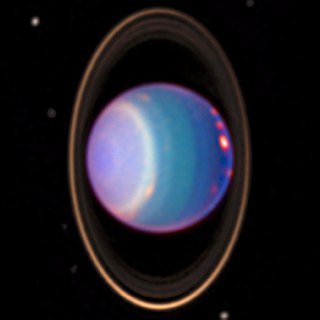
The Near Infrared Camera and Multi-Object Spectrometer (NICMOS) is a scientific instrument for infrared astronomy, installed on the Hubble Space Telescope (HST), operating from 1997 to 1999, and from 2002 to 2008. Images produced by NICMOS contain data from the near-infrared part of the light spectrum.

The Herschel Space Observatory was a space observatory built and operated by the European Space Agency (ESA). It was active from 2009 to 2013, and was the largest infrared telescope ever launched until the launch of the James Webb Space Telescope in 2021. Herschel carries a 3.5-metre (11.5 ft) mirror and instruments sensitive to the far infrared and submillimetre wavebands (55–672 µm). Herschel was the fourth and final cornerstone mission in the Horizon 2000 programme, following SOHO/Cluster II, XMM-Newton and Rosetta.
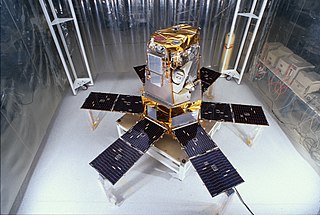
The Solar Radiation and Climate Experiment (SORCE) was a NASA-sponsored satellite mission that measured incoming X-ray, ultraviolet, visible, near-infrared, and total solar radiation. These measurements specifically addressed long-term climate change, natural variability, atmospheric ozone, and UV-B radiation, enhancing climate prediction. These measurements are critical to studies of the Sun, its effect on the Earth's system, and its influence on humankind. SORCE was launched on 25 January 2003 on a Pegasus XL launch vehicle to provide NASA's Earth Science Enterprise (ESE) with precise measurements of solar radiation.
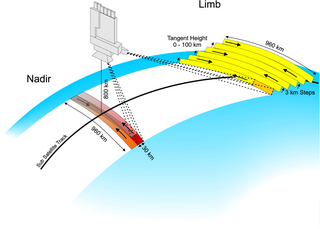
SCIAMACHY was one of ten instruments aboard of ESA's ENVIronmental SATellite, ENVISAT. It was a satellite spectrometer designed to measure sunlight, transmitted, reflected and scattered by the Earth's atmosphere or surface in the ultraviolet, visible and near infrared wavelength region at moderate spectral resolution. SCIAMACHY was built by Netherlands and Germany at TNO/TPD, SRON and Dutch Space.

The Astronomical Netherlands Satellite was a space-based X-ray and ultraviolet telescope. It was launched into Earth orbit on 30 August 1974 at 14:07:39 UTC in a Scout rocket from Vandenberg Air Force Base, United States. The mission ran for 20 months until June 1976, and was jointly funded by the Netherlands Institute for Space Research (NIVR) and NASA. ANS was the first Dutch satellite, and the Main Belt asteroid 9996 ANS was named after it. ANS reentered Earth's atmosphere on June 14, 1977.
Advanced Telescope for High-ENergy Astrophysics (Athena) is an X-ray observatory mission selected by European Space Agency (ESA) within its Cosmic Vision program to address the Hot and Energetic Universe scientific theme. Athena will operate in the energy range of 0.2–12 keV and will offer spectroscopic and imaging capabilities exceeding those of currently operating X-ray astronomy satellites – e.g. the Chandra X-ray Observatory and XMM-Newton – by at least one order of magnitude on several parameter spaces simultaneously.
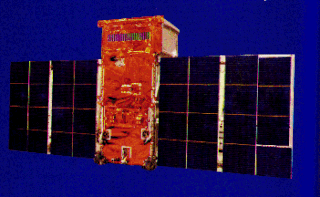
TD-1A, or Thor-Delta 1A, was a European astrophysical research satellite which was launched in 1972. Operated by the European Space Research Organisation, TD-1A made astronomical surveys primarily in the ultraviolet, but also using x-ray and gamma ray detectors.

The SAFARI imaging spectrometer was the European image sensor of Japanese infrared telescope SPICA and is being developed under the leadership of SRON Netherlands Institute for Space Research. SAFARI is an infrared camera with about 6,000 pixels that can make real ‘photos’ of the sky in three adjacent wavelength areas. Fourier transform spectroscopy (FTS) obtains detailed spectral information, allowing astronomers to determine the chemical composition of the observed celestial sources. The Netherlands Organisation for Applied Scientific Research (TNO) is developing the mechanism of this FTS.

Sentinel-5 Precursor (Sentinel-5P) is an Earth observation satellite developed by ESA as part of the Copernicus Programme to close the gap in continuity of observations between Envisat and Sentinel-5.

Mattheus Wilhelmus Maria (Thijs) de Graauw is a Dutch astronomer.
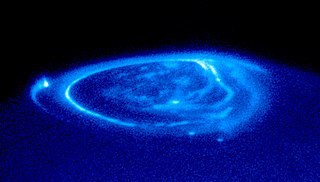
UVS, known as the Ultraviolet Spectrograph or Ultraviolet Imaging Spectrometer is the name of an instrument on the Juno orbiter for Jupiter. The instrument is an imaging spectrometer that observes the ultraviolet range of light wavelengths, which is shorter wavelengths than visible light but longer than X-rays. Specifically, it is focused on making remote observations of the aurora, detecting the emissions of gases such as hydrogen in the far-ultraviolet. UVS will observes light from as short a wavelength as 70 nm up to 200 nm, which is in the extreme and far ultraviolet range of light. The source of aurora emissions of Jupiter is one of the goals of the instrument. UVS is one of many instruments on Juno, but it is in particular designed to operate in conjunction with JADE, which observes high-energy particles. With both instruments operating together, both the UV emissions and high-energy particles at the same place and time can be synthesized. This supports the Goal of determining the source of the Jovian magnetic field. There has been a problem understanding the Jovian aurora, ever since Chandra determined X-rays were coming not from, as it was thought Io's orbit but from the polar regions. Every 45 minutes an X-ray hot-spot pulsates, corroborated by a similar previous detection in radio emissions by Galileo and Cassini spacecraft. One theory is that its related to the solar wind. The mystery is not that there are X-rays coming Jupiter, which has been known for decades, as detected by previous X-ray observatories, but rather why with the Chandra observation, that pulse was coming from the north polar region.

Origins Space Telescope (Origins) is a concept study for a far-infrared survey space telescope mission. A preliminary concept in pre-formulation, it was presented to the United States Decadal Survey in 2019 for a possible selection to NASA's large strategic science missions. Origins would provide an array of new tools for studying star formation and the energetics and physical state of the interstellar medium within the Milky Way using infrared radiation and new spectroscopic capabilities.

The Lynx X-ray Observatory (Lynx) is a NASA-funded Large Mission Concept Study commissioned as part of the National Academy of Sciences 2020 Astronomy and Astrophysics Decadal Survey. The concept study phase is complete as of August 2019, and the Lynx final report has been submitted to the Decadal Survey for prioritization. If launched, Lynx would be the most powerful X-ray astronomy observatory constructed to date, enabling order-of-magnitude advances in capability over the current Chandra X-ray Observatory and XMM-Newton space telescopes.

Arcus is a proposed X-ray space observatory proposed to NASA's Explorer program, Medium Explorer (MIDEX) class.

The GUSTO mission is a high-altitude balloon mission that carries an infrared telescope to measure fine-structure line emission from the interstellar medium. The mission was developed by NASA's Explorers Program, and was launched in December 2023 from Antarctica.



















